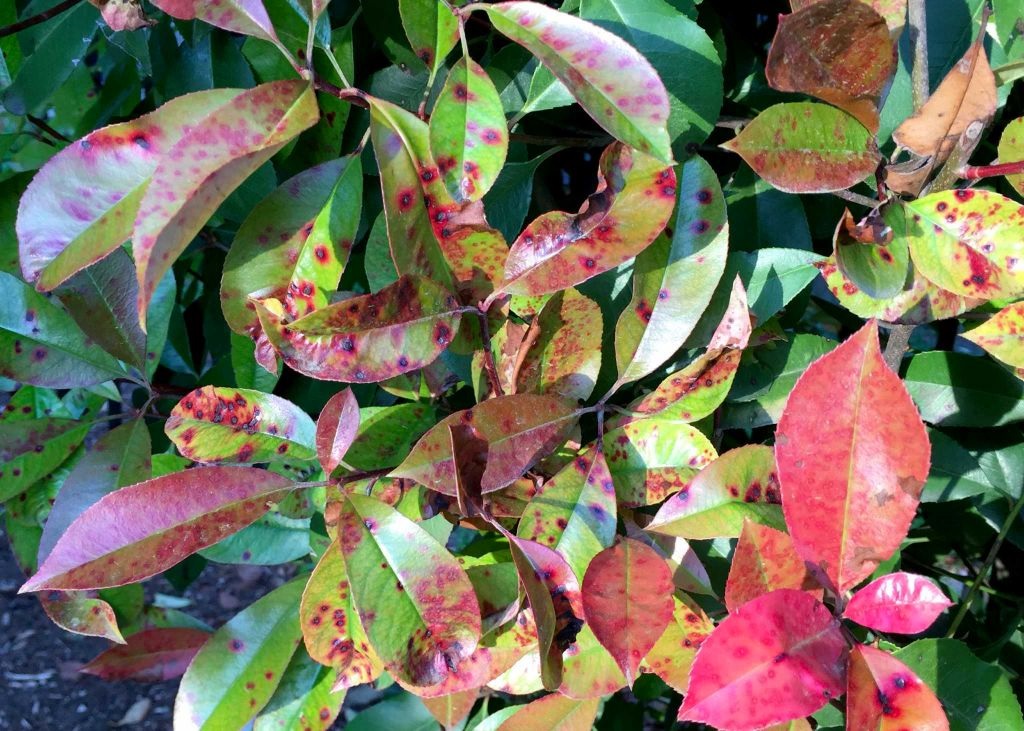My Photinia Leaf Has Spots?
If you have Red Tip Photinia in your yard, you are most likely familiar with the red-purple photinia leaf spots that can appear on the leaves. This spotting is caused by a fungus, Entomosporium, and can cause damage to Photinia and Indian Hawthorn. Other plants in the rose family that may be infected include loquat, flowering quince, pyracantha and pear. We frequently see severe damage after periods of frequent rainfall, although overhead watering for lawns that hits the shrubs is also a factor.
The disease starts as tiny, round, bright red spots on the tops and bottoms of leaves of infected plants. Leaf spots on mature leaves may be brown to gray in the center with a distinct purple border around the edge. Spots may also be found on the petioles and stem of infected plants. Light infections may only cause “cosmetic” damage, but severe infections can cause premature leaf loss.
Fortunately, there are some things that you can do to minimize infection in the future. If your plants are already infected, begin by doing any pruning that might need to be done. Next, shake the limbs and try to knock off any old, infected leaves. The next step is the most important- clean up, clean up, clean up! Rake up all the leaves on the ground and haul them off with any branches you may have trimmed. The infected leaves have inoculum from the fungus on them, and removing them removes potential reinfection.
Although we cannot control the rain, we can control irrigation. If your lawn sprinklers are hitting the plants, try to adjust the heads so they wet the leaves as little as possible. Most important, DO NOT WATER AT NIGHT! The longer the water is on the leaves, the longer the spores have to germinate and infect the plant.
Space the plants adequately to ensure good air circulation. If they were planted too closely in order to fill in fast, eventually you should be able to remove every other plant to help improve air circulation. Avoid practices that force out lots of new growth. Water only when necessary, and water in the morning. Use drip irrigation if possible. Prune only when necessary, as this forces out new growth that is easily infected.
Chemical control is available with fungicides that are specific for this disease. They will prevent spores from germinating, and are mainly effective in keeping the new growth from becoming infected. To avoid resistance, alternate two classes of fungicides with each spray. Follow the directions on the label for best results. Our staff will be glad to suggest specific fungicides for you to use.
As in the case of Leaf Spot on Photinia, different species of plants have problems specific to that species. Planting a large number of the same kind of any plant may result in a maintenance headache due to insect or disease infestation. When possible, try to vary the plant material used as screening in your landscape. It does not cost any more than using a single-species hedge, and often is more attractive in the landscape. Our knowledgeable staff at Backbone Valley Nursery is here to assist you in your plant choices!



